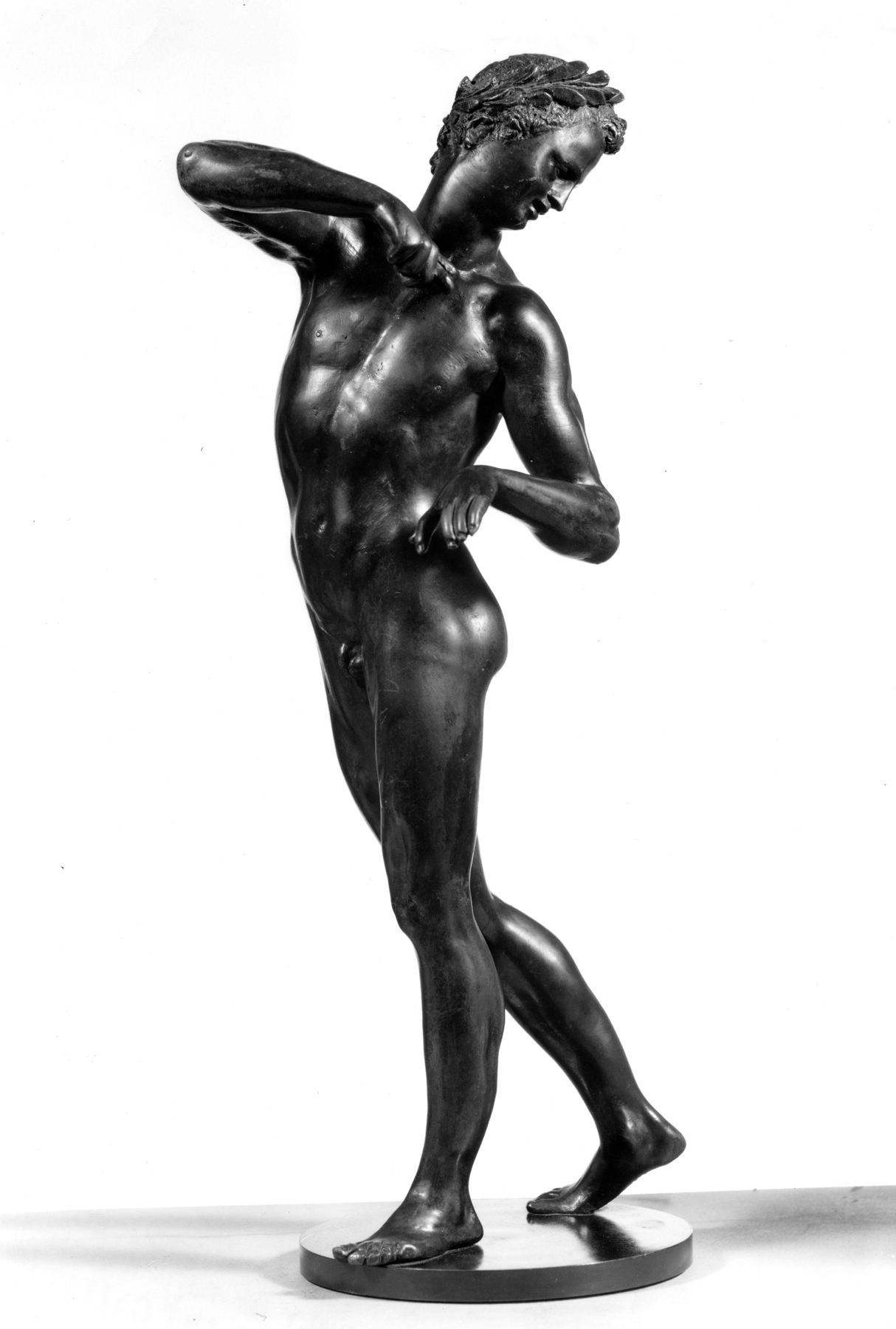Dancing Faun
(Baroque Europe )
In Adriaen de Vries' initial version, this slender young adolescent is a woodland faun (ancient Italian rural deity with a goat's ears and tail, similar to the more ribald satyr of Greek mythology) with a vine wreath around his head, twisting around to see his tail. The elimination of the tail here results in a more dance-like pose that draws the eye around the figure, creating satisfying, changing views from every angle.
In 1588, De Vries was still in the shop of his teacher Giambologna in Florence, although he would go on to work for the greatest rulers of the day, including Emperor Rudolf II in Prague. The body of the faun is handsome, but the detailing of the hair lacks finesse, suggesting that this cast was produced decades later by a less experienced hand.
Provenance
Provenance (from the French provenir, 'to come from/forth') is the chronology of the ownership, custody, or location of a historical object. Learn more about provenance at the Walters.
August Karl Graf von Dönhoff-Friedrichstein (1845-1920 Berlin), as of 1912; Henry Walters, Baltimore, 1914 [mode of acquisition unknown]; Walters Art Museum, 1931, by bequest.
Exhibitions
| 1998-2001 | Highlights from the Collection. The Walters Art Gallery, Baltimore. |
| 1993-1994 | Renaissance and Baroque Bronzes in the Frick Art Museum. The Frick Art Museum, Pittsburg. |
Geographies
Czech Republic, Prague
(Place of Origin)
Italy, Florence (Place of Origin)
Measurements
18 9/16 in. (47.2 cm)
Credit Line
Acquired by Henry Walters, 1914
Location in Museum
Accession Number
In libraries, galleries, museums, and archives, an accession number is a unique identifier assigned to each object in the collection.
In libraries, galleries, museums, and archives, an accession number is a unique identifier assigned to each object in the collection.
54.468


